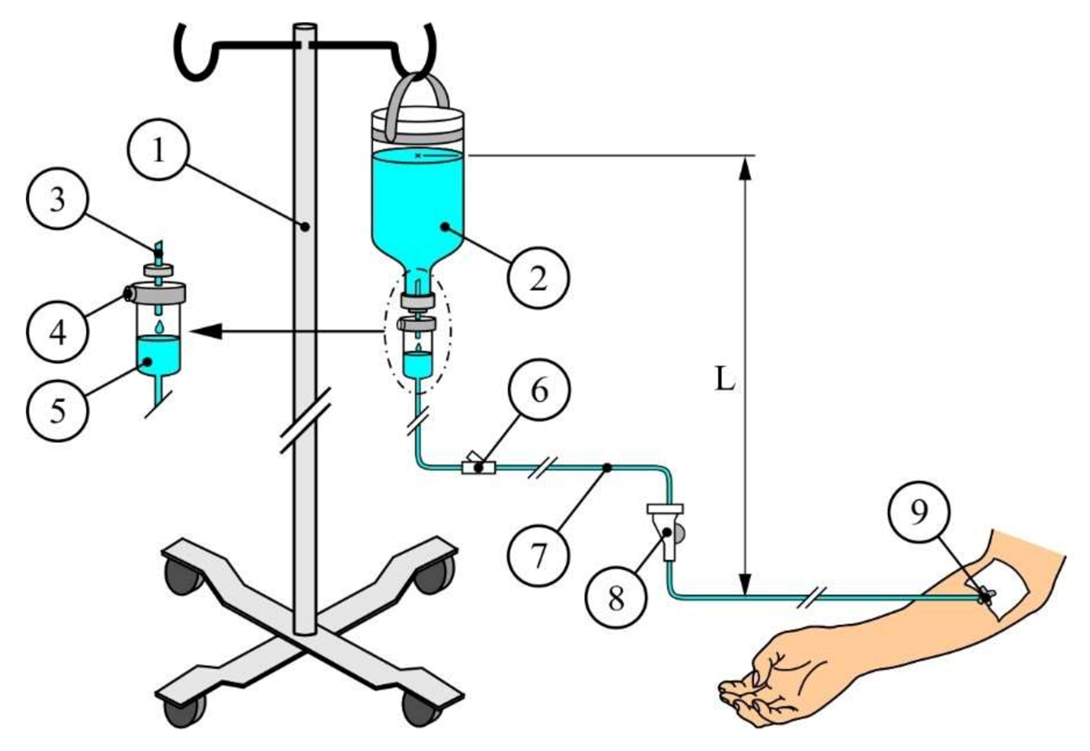A severely dehydrated client has come in for rapid administration of IV fluids. Which of the following solutions is the best solution for rapid infusion?
Normal Saline
1/2 Normal Saline
D5W (5% Dextrose in Water)
D5 1/2 Normal Saline
The Correct Answer is A
Choice A reason: This is a correct answer because normal saline is an isotonic solution, which means it has the same osmolarity as the blood plasma. It does not cause any fluid shifts between the intracellular and extracellular compartments, and it can help restore the fluid balance and the blood pressure of the dehydrated client.
Choice B reason: This is not a correct answer because 1/2 normal saline is a hypotonic solution, which means it has a lower osmolarity than the blood plasma. It causes fluid to shift from the extracellular to the intracellular compartment, which can lead to cellular swelling and edema. It is not suitable for rapid infusion, as it can cause hemolysis and hypotension.
Choice C reason: This is not a correct answer because D5W (5% Dextrose in Water) is an isotonic solution when it is in the IV bag, but it becomes hypotonic once it enters the body, as the dextrose is rapidly metabolized and only water remains. It causes fluid to shift from the extracellular to the intracellular compartment, which can lead to cellular swelling and edema. It is not suitable for rapid infusion, as it can cause hemolysis and hypotension.
Choice D reason: This is not a correct answer because D5 1/2 normal saline is a hypertonic solution, which means it has a higher osmolarity than the blood plasma. It causes fluid to shift from the intracellular to the extracellular compartment, which can lead to cellular shrinkage and dehydration. It is not suitable for rapid infusion, as it can cause hypernatremia and fluid overload.

Nursing Test Bank
Naxlex Comprehensive Predictor Exams
Related Questions
Correct Answer is C
Explanation
Choice A reason: Pyuria, or pus in the urine, is not a direct sign of fluid volume overload. It may indicate a urinary tract infection, kidney stones, or other renal problems.
Choice B reason: Weight loss is not a typical finding of fluid volume overload. In fact, weight gain is a common symptom of fluid retention, as the body holds more fluid than it excretes.
Choice C reason: Jugular vein distention, or the bulging of the neck veins, is a serious indicator of fluid volume overload. It reflects increased pressure in the right side of the heart and the systemic circulation. It may also signal heart failure, pulmonary hypertension, or pericardial tamponade.
Choice D reason: Muscle contractions are not directly related to fluid volume overload. They may be caused by electrolyte imbalances, dehydration, muscle fatigue, or nerve disorders.
Correct Answer is ["A","B","D"]
Explanation
Choice A reason: Oily stools are common, especially when excessive fat is consumed, because orlistat blocks the absorption of fat in the intestines. The undigested fat is then eliminated in the stool, making it oily, greasy, or foul-smelling.
Choice B reason: Many patients note having an increase of gas and flatus, because orlistat can also interfere with the digestion of carbohydrates and proteins, causing fermentation and gas production in the colon.
Choice C reason: Constipation is not a common side effect with this medication. In fact, orlistat may cause the opposite effect of diarrhea, as the unabsorbed fat can irritate the bowel and increase the motility.
Choice D reason: Some patients report the development of fecal incontinence, because orlistat can cause unpredictable bowel movements and difficulty in controlling the passage of stool, especially if the patient consumes a high-fat diet.
Choice E reason: This medication does have side effects, even though it can be bought over the counter. Orlistat is a prescription-strength drug that can cause serious adverse reactions, such as liver damage, kidney stones, gallbladder problems, and vitamin deficiencies. The over-the-counter version is a lower dose than the prescription one, but it still requires medical supervision and lifestyle changes.
Whether you are a student looking to ace your exams or a practicing nurse seeking to enhance your expertise , our nursing education contents will empower you with the confidence and competence to make a difference in the lives of patients and become a respected leader in the healthcare field.
Visit Naxlex, invest in your future and unlock endless possibilities with our unparalleled nursing education contents today
Report Wrong Answer on the Current Question
Do you disagree with the answer? If yes, what is your expected answer? Explain.
Kindly be descriptive with the issue you are facing.
